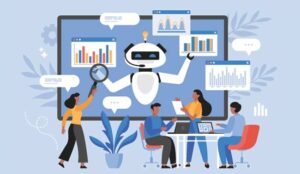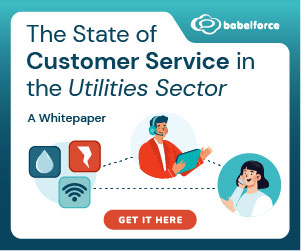The American president, Joe Biden, recently proposed a series of customer service initiatives that he’s calling “Time Is Money.”

These proposals, which are aimed at cracking down on companies’ bad faith customer service practices, include actions anyone would support – like making it easier to cancel subscriptions and eliminating fake product reviews.
A few of the proposed actions focus on customer self-service technologies such as interactive voice response (IVR) systems and chatbots.
Biden’s briefing refers to IVRs as “doom loops,” describing them this way: “Too often customers seeking assistance from a real person are instead sent through a maze of menu options and automated recordings, wasting their time and failing to get the support they need.”
Whilst the American president’s customer experience policies will not greatly impact business in the United Kingdom and elsewhere, there are lessons to be taken from these actions because they point to customer experience pain points felt everywhere.
In the push to integrate self-service technologies with customer experience, too many companies are thinking technology first and customer second. It’s time to take a more thoughtful and deliberate approach to technology integration in the customer experience.
The Stakes Are Too High to Get Customer Experience Wrong
No matter what the industry, customer acquisition is a key focus for any business. Companies spend big money on marketing and sales activities to win new customers.
Figures vary, but they generally show that acquiring a new customer costs five times more than retaining an existing one. Additionally, losing customers is all too easy, with 86% of customers saying they would leave a brand after just two bad experiences.
The ability to retain, grow, and produce repeat business is dictated by the customer experience, and technologies like artificial intelligence and conversational intelligence can help vastly improve that experience.
Too often legislation targets technology or automation as the cause of customer frustration rather than the reliever of frustration – but that doesn’t tell the full story.
Increasingly, customers want to use technology for self-service, with 62% of customers saying they would use a chatbot instead of waiting for a customer service representative to take their call.
The issue isn’t the technology by itself. Instead, it’s the design, execution, and customer experience strategy behind the technology that creates friction for customers.
Technology should constantly improve customer experiences by increasing personalization, decreasing friction, and driving productivity.
However, businesses cannot simply adopt technology and expect these outcomes. Without holistic operational, data, and change-management strategies driving technology adoption, businesses risk creating worse experiences for customers.
How Can Businesses Use Technology to Get Customer Experience Right?
Technology should never replace humans, and no customer experience strategy should ever deny a customer the right to speak with a human being. Some businesses might hide their telephone number to promote customer self-service and cut costs, but this type of strategy is entirely counter-productive.
If businesses try to deny access to a human because they’re obsessed with a self-service or cost-reduction strategy, then they lose the capability for connections and the opportunity to engage in a value-based way.
Recall that acquiring a customer is much more expensive than retaining one. To risk customer retention by designing poor customer experiences is not only bad for customers, it’s bad for business. Human connection and technology must go hand in hand in the modern customer experience.
When technology and human connection are thoughtfully built into a well-designed customer experience strategy, it’s a win-win for customers and for businesses. Customers can proactively and productively meet their needs and businesses can lower costs and retain more of their hard-won customers.
So, what does customer-first technology integration look like in practice? If we look at the American president’s “doom loops” – or IVRs – these types of automated telephone menus were revolutionary when they first came on the scene over thirty years ago.
Instead of repeatedly answering the same question over the telephone, businesses could automate the answers to questions about store hours or route callers to the appropriate resource. With today’s technology advances, these systems now feel cumbersome at best and annoying at worst.
Much better alternatives exist. With natural language understanding (NLU) and AI, IVR systems can simplify their menu of options.
Rather than including a prompt for a laundry list of questions a customer may have, the customer can state their problem in a natural way and the IVR will give them the correct response or route them to a human agent.
Even better, AI-powered IVR systems can use advanced analytics to predict the question before the customer even asks it.
Today’s technology can better understand customer intent – which increases productivity and satisfaction – but it’s also programmed to know when routing to a human is the right choice.
Technology Is Not the Answer… On Its Own
Too often, businesses focus on technology adoption rather than customer experience transformation.
Initiatives that prioritize technology adoption over operational, data, and change-management implementation fall short of true customer experience transformation because they lack the design and orchestration needed to realize customer experience benefits like increased personalization, decreased friction, and higher productivity.
As generative and conversational AI become more advanced, we’ll see more opportunities for technology to influence the customer experience. The key is to use these tools to increase the value of customer connections rather than simply using technology to cut costs.
Written by: Mahadevan Perumal Meikum, Vice President, Technology Consulting, TTEC Digital
Author: Guest Author
Reviewed by: Rachael Trickey
Published On: 26th Sep 2024 - Last modified: 26th Feb 2025
Read more about - Expert Insights





































